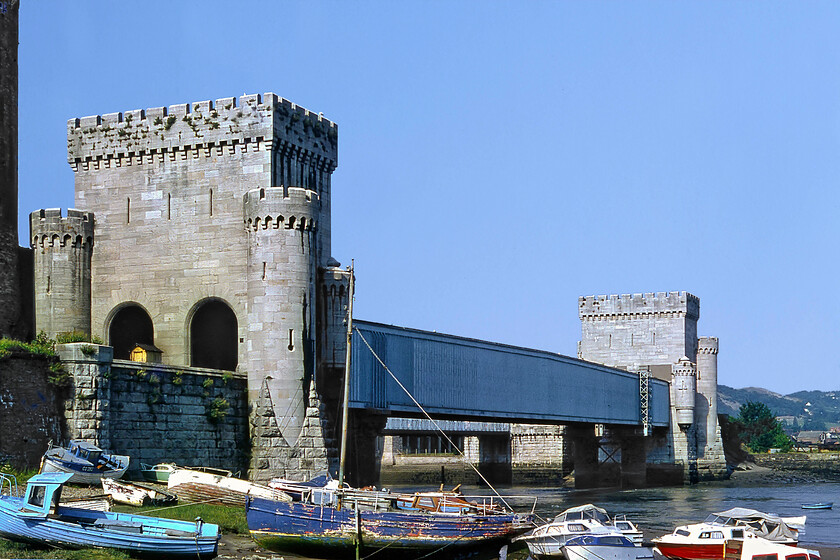|
||||
Officially opened in 1849, even though traffic had been usingit since 1848, the Conwy tubular railway bridge is a fine and interesting structure. In common with much of its infrastructure the Chester and Holyhead Railway appointed Francis Thompson to be the architect of their bridge to carry the railway over the estuary of the River Conwy. His design dressed the pylons at either end as barbicans with crenellated turrets, arrow slits and bartizans to complement the adjacent Conwy Castle that had stood on the promontory since the late 13th century. His design has stood the test of time well and is very typical of Victorian extravagance and excess. |
||||
|
|
||||

